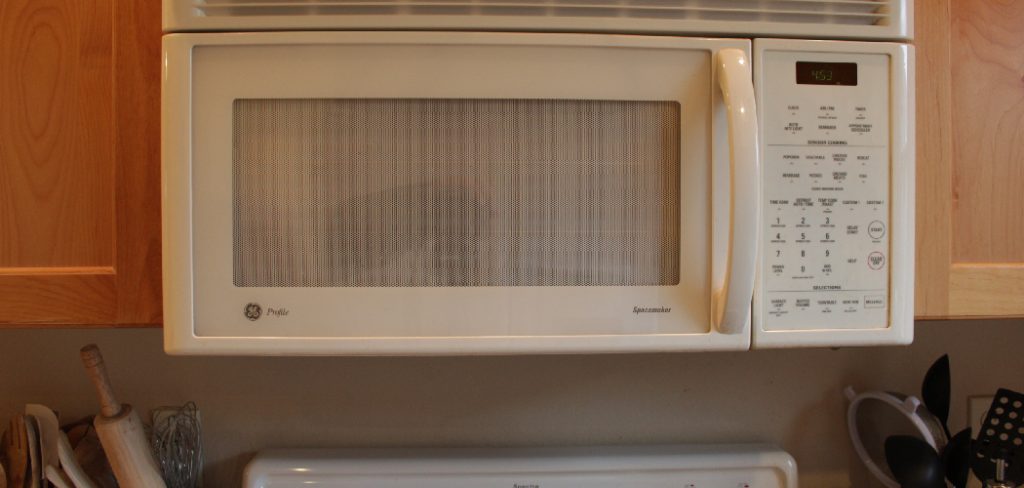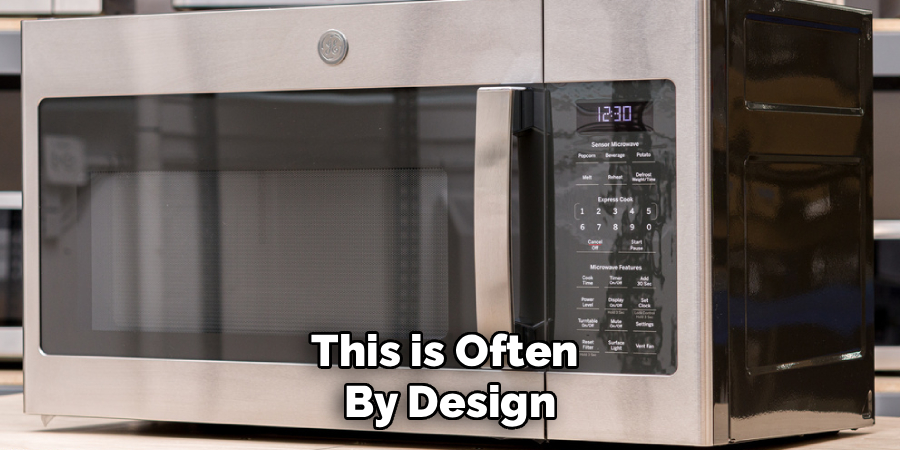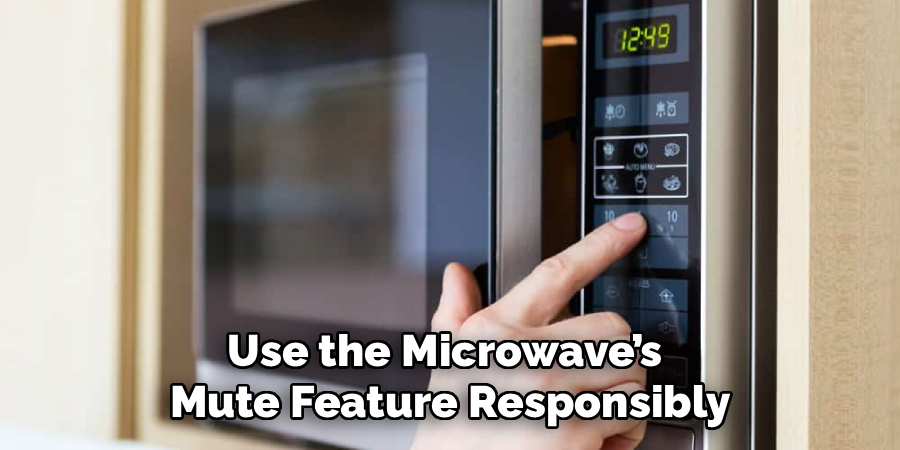GE microwaves are a staple in kitchens across the globe, known for their reliability, thoughtful design, and intuitive controls. Yet, one common source of frustration can be those persistent beeps—alerts that signal when a cycle is finished, a button has been pressed, or when an error occurs. For many, especially those with sleeping children, roommates, or simply a preference for quiet, finding ways to silence these beeps becomes an important quality-of-life improvement.

This article will show you how to mute GE microwave, revealing the specific features GE offers, walking you through step-by-step instructions, and offering troubleshooting advice in case your model seems determined to keep chiming. Whether you’re looking to ease your late-night snack routine or maintain a peaceful living space, mastering the sound settings on your GE microwave can make daily life just a little bit smoother.
Why Would You Want to Mute Your GE Microwave?
Practical Reasons for Muting
Silencing a GE microwave can transform the atmosphere in your kitchen—especially during those moments when quiet is golden. Many users find themselves preparing early morning oatmeal, a late-night mug of tea, or after-school snacks for children who have just dozed off. In such situations, the standard beeping that accompanies most microwave models can be surprisingly disruptive. Even in bustling homes, constantly pinging appliances can contribute to sensory overload, making a tranquil environment harder to maintain.
Understanding Microwave Beeping
Beeping is not just a matter of signaling the end of a cycle. Microwaves use audible alerts for a variety of purposes: to warn if the door is left open, to notify about errors, or to call attention if a setting hasn’t been confirmed. While these sounds serve important safety and usability functions, not every beep is essential in every context. Understanding when and why your microwave beeps lays the groundwork for knowing what you can safely silence, and what is better left audible for your own protection and convenience.
GE Microwave Features That Include a Mute Option
Models with Sound Controls
Not every GE microwave is created equal when it comes to sound control features. Within the product lineup, you’ll encounter basic models that may only offer minimal sound adjustment, as well as high-end units equipped with dedicated muting functions and customizable alert settings. Some microwaves include a clearly marked “Sound” or “Mute” button, while others tuck this feature away as a secondary function on number keys or settings menus. Before adjusting your appliance, it pays to understand which category your model falls into. This way, you can confidently mute your GE microwave without the guesswork.
Locating the Mute Feature in the User Manual
When it comes to locating any specialized feature—including sound control—the user manual is your friend. GE manuals typically list every button, secondary function, and trick your microwave can perform. If you’ve misplaced the paper manual, digital copies are often available on GE’s website. Take a moment to inspect the table of contents or index for terms like “sound,” “mute,” or “audible signal.” Identifying your model’s muting capabilities ensures you’re following the correct steps and helps avoid unnecessary frustration.

Step-by-Step Guide on How to Mute GE Microwave
Using the “Sound” or “Mute” Button Directly
The fastest way to mute many GE microwaves is with a simple button press. Start by scanning your microwave’s control panel for a button labeled “Sound,” “Mute,” or a small bell icon. If you find it:
- Press and hold the button for approximately three to five seconds.
- Listen for a confirmation beep or check your display for text indicating the sound is now off.
This straightforward process is common in newer or mid-to-high-end GE models. As always, referencing your user manual can confirm both the presence and the operation of these controls.
Accessing Sound Controls in the Settings Menu
For GE microwaves with touchscreens or advanced digital displays—often found in built-in or smart models—the sound settings may be contained within a digital menu. Start by pressing “Settings” or “Menu” on your microwave. From there, use the arrow keys or on-screen options to scroll through available features until you find “Sound,” “Audio,” or “Beep.” Once located, select the option to turn off beeping, confirm your selection, and exit the menu.
If your microwave has multiple user profiles or offers smart customization, be aware that sound controls may be set individually for each profile, so check which one is currently active.
Muting Without a Dedicated Button
Some older or more basic GE microwaves don’t include an obvious muting feature. This doesn’t mean you are entirely without options. In some models, secondary functions are attached to seemingly unrelated buttons, like pressing and holding “2” or “8” for several seconds. If you’ve explored the user manual and found no clues, GE’s official website or customer service may be able to provide model-specific advice.
As a last resort, unplugging the microwave to reset it or performing a factory reset (following instructions in the manual) can sometimes clear persistent beeping caused by glitches, although it may also reset your cooking presets and clock settings.

Troubleshooting Issues With the Mute Function
Mute Button Not Responding
Occasionally, pressing the mute or sound control button won’t have the intended effect. This could be due to a temporary glitch or because of a stuck or dirty button. Ensure the control panel is clean and free from food residue or water. Wipe gently with a damp, soft cloth, then dry thoroughly before testing again. If your touch controls still won’t respond, unplug the appliance for a few minutes to allow a complete reset, then reconnect and try again.
Sometimes, the mute function has a time delay or requires the door to be closed when entering commands. Double-check the recommended procedure for your specific model.
Persistent Sounds After Muting
After activating mute mode, you may still hear certain alerts—such as timer beeps or error notifications. This is often by design. For safety reasons, GE microwaves are programmed to bypass mute settings for error alerts or urgent notifications (like overheating or a stuck door), ensuring you don’t miss a critical warning. If you suspect a malfunction—for example, if normal cycle beeps resume despite being muted—refer to your user manual’s troubleshooting section, perform a reset, or contact GE customer service for assistance.

Additional Features That Enhance Quiet Operation
Child Lock and Sound Control Integration
Many GE microwaves bundle their sound control and child safety features. The child lock function prevents accidental button presses—which is especially useful in homes with curious children—and may silence certain alerts during its active period. However, not all models combine these two features. If keeping your home silent is a priority, look for a model specifically advertising integrated sound and child-safety controls.
Smart Features in High-End GE Microwaves
Smart and Wi-Fi-enabled GE microwaves take quiet operation a step further. These models sometimes offer remote access to sound controls via a dedicated app, letting you adjust beep settings from your smartphone. Some allow scheduling of quiet periods for times when you know you’ll need silence—like bedtime or during meetings. Exploring the features of your GE microwave, or upgrading to a smart model, can provide even greater control over your kitchen’s noise profile.
Safety Considerations When Muting a Microwave
Ensuring Alerts Still Function
While the ability to mute standard kitchen noises is valuable, it’s important not to overdo it. Certain beeps are designed to alert you to errors, overheating, or other potentially hazardous situations. Always verify, after muting your microwave, that emergency tones or error warnings remain functional. If you attempt to mute everything and later notice you’re missing these critical alerts, revert the sound settings or consult customer support for guidance.
Using the Mute Function Responsibly
Use the microwave’s mute feature responsibly. If you’re trying new recipes or need to monitor cooking progress, you may want to keep sound alerts enabled for safety and convenience. Likewise, when troubleshooting an appliance, unmuting the microwave allows you to hear diagnostic beeps and other helpful signals.

Comparing Muting Features Across GE Microwave Models
GE offers a wide spectrum of microwave models, each with its own set of sound controls. Some entry-level units allow only for full sound or no sound, with limited customization. Mid-range models often add more nuanced control: muting only button presses or end-of-cycle tones, for example. The most advanced GE microwaves frequently include mute settings integrated with smartphone controls, automatic quiet hours, and more.
In some cases, older models may lack native capability to mute beeps entirely, though workarounds exist. For these, customer reviews, online forums, or GE support can be invaluable resources. If muting is a crucial feature for your household, consider consulting the product specification sheet before your next microwave purchase.
Maintenance Tips for the Sound Control System
Cleaning Control Panels Regularly
Button and touch control responsiveness is closely tied to cleanliness. Oils from hands, kitchen splatters, and dust can cause buttons to stick or become less responsive, which in turn can affect your ability to activate mute and other electronic features. To maintain performance, regularly clean your microwave’s control panel using a soft, damp cloth. Avoid harsh chemicals or excessive moisture, as these can damage screens or seep into the electronics.

Power Cycling for Persistent Sound Issues
Like most digital appliances, microwaves can sometimes benefit from a reset when experiencing stubborn sound issues. Power cycling—simply unplugging the microwave, waiting a few minutes, and plugging it back in—can resolve unresponsive controls or strange alert patterns. If sound problems persist after these steps, a factory reset or service call may be in order.
Conclusion
Learning how to mute GE microwave is a simple yet significant step toward creating a more comfortable and peaceful kitchen. By understanding the specific mute features of your model, navigating user-friendly menus, and keeping your control panel clean, you can enjoy the full range of your microwave’s capabilities without the disruptions of constant beeping. This feature not only supports quieter routines for families, shift workers, or anyone with noise sensitivities—it also empowers you to customize your kitchen to your lifestyle.
Remember to use the mute function wisely, check that vital alerts still sound, and explore advanced options if you’re seeking even greater control. With just a few thoughtful steps, you can make your GE microwave work more quietly—and more effectively—for you.
Professional Focus
Angela Ervin, a former interior designer turned blogger, specializes in kitchen design and renovations. Through her website, she blends her passion for cooking with design expertise, sharing practical and creative ideas. Known for balancing functionality and beauty, Angela’s insightful content has made her a trusted voice in home design and lifestyle.
About the Author
Angela Ervin, an experienced interior designer and blogger, combines her passion for kitchen renovations with storytelling. Living in Petersburg with her family, she enjoys cooking and testing her projects firsthand. Known for her humor and relatable style, Angela shares creative, functional design insights through her content, making her a trusted voice in home design.
Education History
University: Virginia Commonwealth University
Degree: Bachelor of Fine Arts (BFA) in Interior Design
- Angela’s education at VCU focused on mastering core interior design principles, including spatial planning, color theory, materials selection, and sustainable design practices.
- She gained hands-on experience through studio projects and collaborative design exercises, which honed her ability to create functional and aesthetically pleasing environments.
- Her coursework also emphasized problem-solving and practical applications of design, preparing her for real-world projects like her self-directed kitchen renovations.
- The program’s strong foundation in both technical skills and creative expression shaped Angela’s ability to seamlessly integrate form and function in her work.
